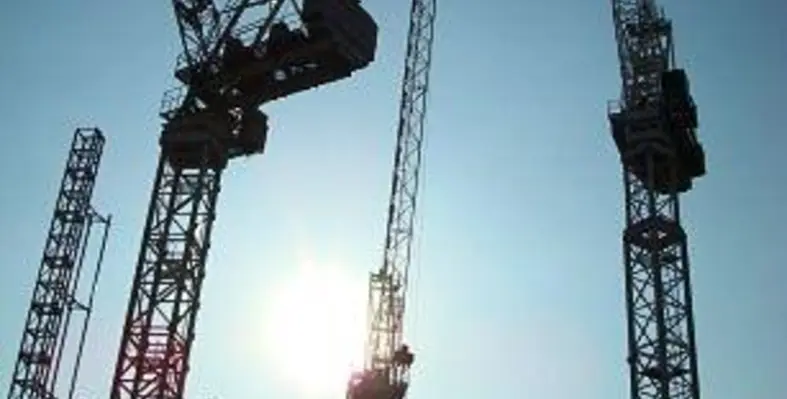The overall infrastructure spending in the sub-Saharan region is projected to grow by 10 per cent a year over the next decade and will exceed US$180bn by 2025, a new report by PricewaterhouseCoopers (PWC) reveals
Nigeria and South Africa dominate the infrastructure market, but other countries like Ethiopia, Ghana, Kenya, Mozambique, and Tanzania are also poised for growth, the report added.
“Growth prospects in most of the region’s economies look promising as they were not affected as much by the global financial crisis of 2008. The crisis has not had a major effect on South Africa’s infrastructure spending. From an estimated US$7bn in 2001, investment in infrastructure grew relatively consistently to reach US$22bn by 2012.”
Infrastructure spending overall is forecasted to reach around US$60bn by 2025 for South Africa, having grown by 10 per cent on average a year. However, South Africa is likely to lose share of regional spending relative to Nigeria as the West African nation’s better fiscal position and oil revenues will likely enable it to outperform South Africa over the coming decade, the report said.
Overall infrastructure spending in Nigeria is expected to grow from $23 billion in 2013 to $77 billion in 2025. A more investor-friendly environment towards oil investment is also likely to boost this projection further.
The PwC report also noted that a substantial increase in spending in the basic manufacturing sector is expected in sub-Saharan Africa. “Annual spending in the chemical, metals and fuels sector is forecasted to increase across the seven major African economies to US$16bn, up from about US$6bn in 2012.”
Transportation investment is also expected to grow rapidly in South Africa over the coming decade, in particular in the road and rail sub-sectors. Transportation investment will likely grow to just short of US$9bn by 2025.
The report also shows that spending on utility infrastructure is expected to be significantly stronger in countries that need to upgrade deficient energy, water, and sanitation services and in economies that are rapidly urbanising, such as China, Ghana and Nigeria.
The greatest growth of spending for utilities is expected in sub-Saharan Africa where an annual rate of 10.4 per cent between now and 2025 is forecasted. Spending for electricity production and distribution in the region is expected to rise from US$15bn in 2012 to US$55bn, while expenditures for improvements in water and sanitation services are forecasted to increase from US$3.3bn in 2012 to about US$10bn by 2025.
According to the report, the extraction spending in sub-Saharan Africa is projected to increase at eight per cent annually over the next decade. The bulk of spending is likely to take place in South Africa and Tanzania. The extraction sector, driven by both oil and gas as well as non-oil and gas industries, will grow at an annual rate of five per cent. Oil and gas extraction activity and infrastructure spending are expected to vary across countries and regions.
Global capital project and infrastructure spending is expected to grow to more than US$9 trillion annually by 2025, up from US$4 trillion in 2012.
The report, for which Oxfords Economics provided research support, analyses infrastructure spending across 49 of the world’s largest economies which account for 90 percent of global economic output.
It covers five industry sectors — extraction, utilities, manufacturing, transport and social — and forecasts their impact on seven major world economic regions namely Western Europe, Latin America, Asia-Pacific, Middle East, sub-Saharan Africa, Former Soviet Union and Central and Eastern Europe. It estimates the scale of current infrastructure investment and assesses the prospects for future investment from now to 2025. Overall, close to US$78 trillion is expected to be spent globally between now and 2025 on capital projects and infrastructure.
Jonathan Cawood, PwC Head of Capital Projects and Infrastructure for Africa, said, “Megacities in both emerging and developed markets- reflecting shifting economic and demographic trends – will create enormous need for new infrastructure. These shifts will leave a lasting, fundamental imprint on infrastructure development for decades to come.
“As economies develop, the types of infrastructure investment needed evolve, but not every country makes infrastructure spending a priority. If you don’t invest when your economy is growing, you may find yourself very quickly at a point where your runways and roads and ports and rail lines are choked.”
Cawood added that resources and consumer market potential coupled with trade, economic and political reforms, increasing urbanisation and shifts in demographics will drive the majority of investment in Africa.
It is crucial for policymakers, citizens and businesses to understand the factors that unlock infrastructure investment and development and to act responsibly and strategically within a long term vision to create the right conditions for success, he noted.





